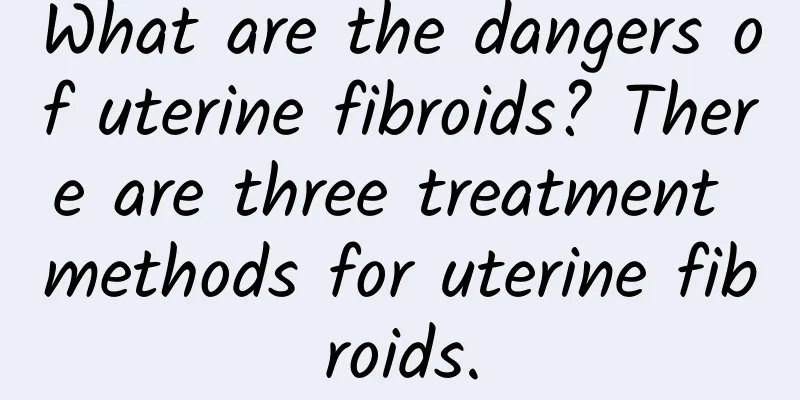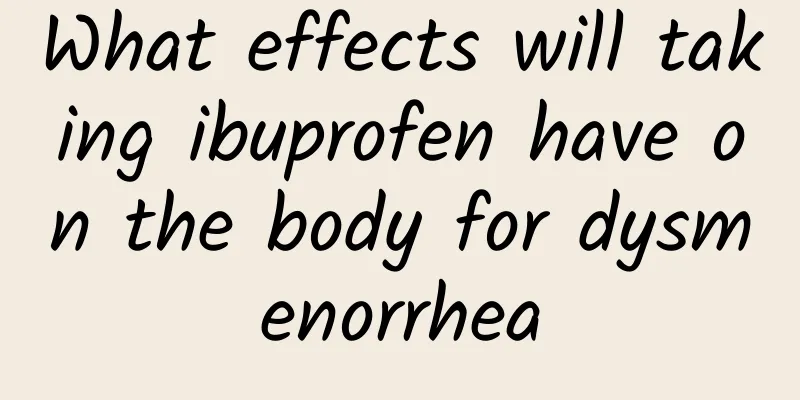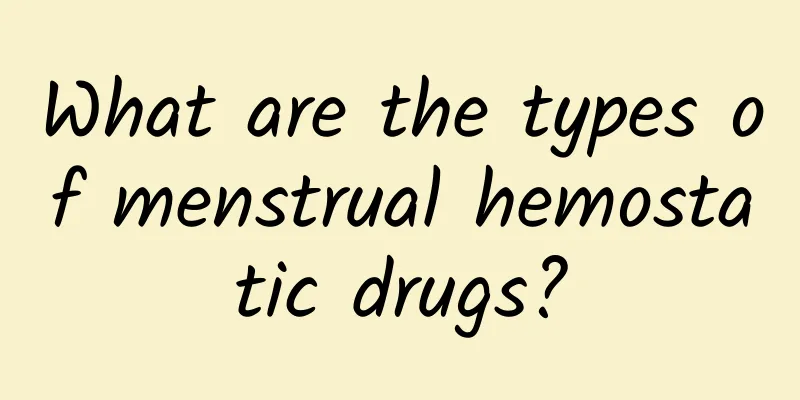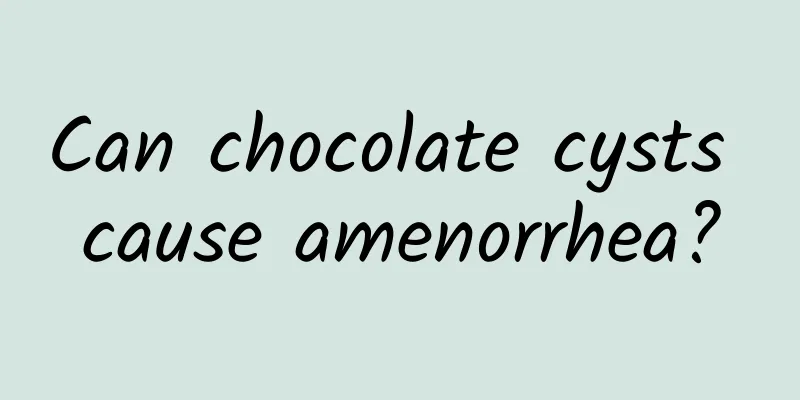What are the dangers of uterine fibroids? There are three treatment methods for uterine fibroids.

|
As the palace for nurturing the next generation, the uterus has extremely strong elasticity. When the pregnancy is full-term, the volume can expand up to 1,000 times. The four walls of this palace are crisscrossed muscle layers, and the entrance is the cervical opening. If some muscle fibers grow in a spiral shape, forming a solid tumor, this is a uterine fibroid. Uterine fibroids are a very common benign disease in women of childbearing age. About 1/5 of women aged 30-50 suffer from uterine fibroids. According to literature reports, the prevalence of uterine fibroids can be as high as 80%. What are the dangers of uterine fibroids? Crime 1: Causes abdominal pain. There are loose gaps between uterine fibroids and normal muscle fibers. If fibroids grow on the outer wall of the uterus, it will not have much impact on the physiological function of the uterus, unless the pedicle of the fibroid is too long and the pedicle is twisted, causing abdominal pain and requiring emergency surgery. Crime 2: Causes menstrual disorders. If the fibroid grows between the walls and bulges inward, causing the inner wall to protrude, it is called an intramural fibroid; if it grows on the inner wall and the tumor protrudes into the uterine cavity, it is called a submucosal fibroid. Intramural fibroids and submucosal fibroids are likely to cause symptoms such as prolonged menstruation, excessive menstrual flow, increased leucorrhea, and abdominal pain during menstruation; if the menstrual flow is excessive for a long time, it can lead to chronic hemorrhagic anemia. Crime 3: Affecting fertility. Myomas that occupy the space of the uterus and deform the inner wall of the uterus may affect the implantation of the fertilized egg and the development of the embryo, causing infertility and miscarriage. During childbirth, because the myoma is sandwiched between the myometrium, it may cause the uterus to contract weakly and uncoordinatedly, affecting the progress of labor; myomas close to the cervical opening will hinder the descent of the fetal presenting part. Uterine fibroids have other crimes, which I will not go into detail. In general, uterine fibroids are a very common benign disease that will not metastasize to other parts of the body. Although about 1% of fibroids may become malignant, they have already been renamed as uterine sarcomas. How to treat uterine fibroids For uterine fibroids, gynecologists use a "differential sentencing" approach based on the location of the fibroid's growth and the size of the "crime." Small fibroids do not require treatment and can be monitored regularly It is mainly aimed at those uterine fibroids that are small, grow slowly, and have no symptoms. Since there is no "previous history", no treatment is required. Gynecological examinations are performed once or twice a year. The doctor will make further diagnosis and treatment recommendations based on the examination results. Which fibroids should be treated with drugs? For some uterine fibroids that do not need to be "immediately executed", drugs can be used for treatment. For example, if the uterine fibroids are too large, the volume of the fibroids must be reduced before surgery to reduce the difficulty of the operation; if fibroids cause anemia, the possibility of intraoperative blood transfusion can be reduced, and postoperative recovery can be promoted. Drugs can be used to treat amenorrhea and correct anemia; if the uterine fibroids are about 4 cm in diameter and the patient has not yet given birth, but is unwilling to undergo myomectomy; etc. The drugs used include androgens, danazol, triene high ketone, mifepristone, etc. However, the effects of these drugs are not very satisfactory, and they are prone to recurrence. Therefore, drug treatment can only lay the foundation for surgical treatment or palliative treatment. How big is the uterine fibroid that requires surgery? For the "extremely serious" uterine fibroids, the only punishment is "death penalty", because surgical treatment can eliminate the lesions and confirm the diagnosis. Uterine fibroids that need to be "cut off" include: recent rapid growth, suspected malignant changes or infection, torsion; located in the uterine cavity, because it will cause more and longer bleeding, and drug treatment is not effective; uterine fibroids cause menorrhagia, leading to anemia (hemoglobin less than 10 grams/liter); there are many fibroids or they are large in size, making the entire uterus larger than a uterus at two and a half months of pregnancy; fibroids grow in the cervix, blocking the portal to the uterus; fibroids compress the bladder or rectum, causing symptoms such as frequent urination, incomplete urination, or difficulty defecation; etc. In addition, if the fibroids do not shrink but increase in size after menopause, surgical treatment is also necessary because there is a possibility of malignant transformation. There are three methods of "execution": total hysterectomy, subtotal hysterectomy, myomectomy, etc. If there is no desire to have children, a total hysterectomy or subtotal hysterectomy is feasible. A total hysterectomy is to remove the uterine body and cervix together, and a subtotal hysterectomy retains the cervix. If the patient still has the desire to have children or has submucosal fibroids, a feasible myomectomy can retain the uterus. From "Sentencing" we can see that those so-called drugs that can completely solve fibroids have no conclusive scientific basis at all. In addition, the volume growth of some uterine fibroids does not necessarily cause symptoms, and may even quietly lead to malignant expansion, which is difficult to find without regular examinations. If you blindly use drugs to treat uterine fibroids, it may delay the disease and endanger life. Therefore, patients with uterine fibroids should undergo regular examinations and surgeries under the guidance of gynecologists, neither over-sentencing nor making them worry-free. |
<<: What are the early symptoms of uterine fibroids? Drug treatment methods for uterine fibroids
Recommend
8 signs that you may have a miscarriage
There is no such thing as eight symptoms indicati...
Which hospital is good for treating endometrial tuberculosis?
In life, many female friends are troubled by endo...
Build a good body shape and choose the right liposuction method according to the body shaping area
Liposuction is considered as one of the body shap...
Is ovarian cyst a serious disease?
Ovarian cysts are a common gynecological disease ...
How to prevent cervicitis? Will the disharmonious sex life of couples induce cervicitis?
Through the analysis of the causes of cervicitis,...
What are the causes of cervical erosion? Summary of the causes of cervical erosion in women
Cervical erosion is common in married women. Comm...
Is there a high chance that cervical warts will heal on their own?
In this era, various diseases come with it. Even ...
What is the chance of curing dysmenorrhea?
How high is the chance of curing dysmenorrhea? Dy...
What to eat to protect the fetus in patients with habitual miscarriage? Nutritious fish
Women who have habitual miscarriages can eat some...
Initial diagnosis of cervical precancerous lesions
What are the differential diagnosis methods for c...
How to cure uterine effusion
How can uterine effusion be cured? This question ...
Is it normal for adolescent girls to have irregular menstruation? What should I do if my adolescent girls have abnormal menstruation?
Irregular menstruation is a phenomenon that many ...
Will eating chocolate make you fat? Research: Mastering these 3 tips can also be a good helper for weight loss
Still think chocolate is a sinful food that cause...
Is vulvar leukoplakia contagious?
Is vulvar leukoplakia contagious? Vulvar leukopla...
What are the comprehensive treatments for chronic adnexitis?
What are the comprehensive treatment methods for ...









